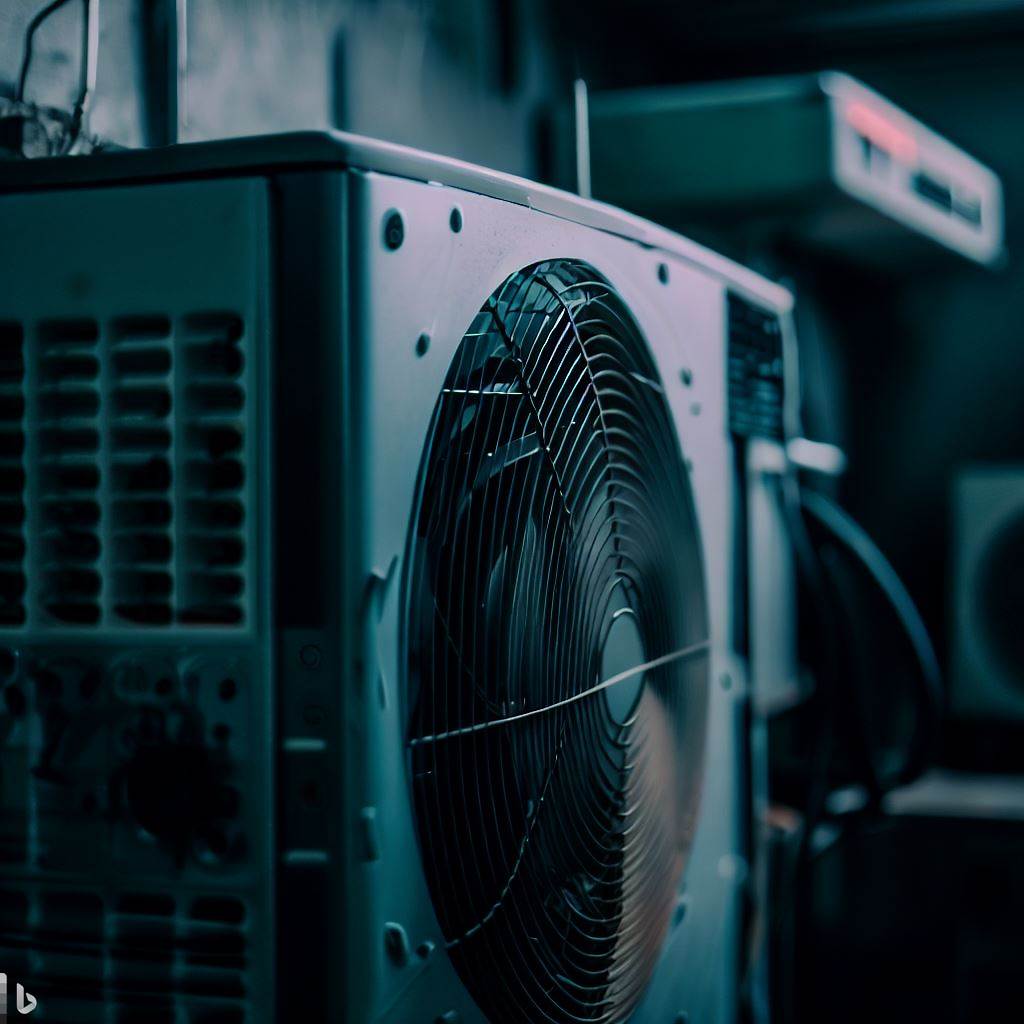This is an updated article on 2023 HVAC financing rates – last updated 8/7/2023.
Investing in a new furnace, air conditioner, or comprehensive HVAC system represents a major expense for most homeowners. With quality installations ranging from $5,000 to $15,000, HVAC financing often makes these systems more affordable by spreading costs over months or years.
Below we’ll explore common HVAC financing options, associated rates and terms, cost considerations, and tips for securing the best financing deal for your next heating or cooling equipment purchase.
What Are HVAC Loans?
HVAC loans allow you to borrow money to cover the upfront costs of purchasing and installing new heating and cooling equipment in your home.
Rather than paying the full amount at once, the loan provides the funds upfront so you can move forward with your HVAC project. This is repaid over time through fixed monthly payments. Interest is charged on the loan balance.

HVAC loans differ from leases and rent-to-own financing in that you own the equipment. The loan must be fully repaid even if you sell the home before it’s paid off.
Key features of HVAC loans include:
Fixed Interest Rates – The interest rate stays the same over the full loan term.
Fixed Monthly Payments – Your payment doesn’t fluctuate.
Varied Terms -Loan terms typically range from 1 to 15 years. Longer terms have lower payments.
Early Repayment – Many loans allow you to pay off the balance early with no prepayment penalty.
Credit Check – Your credit score impacts the loan rates and terms you qualify for.
Why You Should Consider HVAC Financing
Here are the top benefits of financing major HVAC equipment purchases:
Affordability
Financing spreads costs over months or years through fixed monthly payments, making new HVAC systems more affordable for homeowners.
Increased Cash Flow
You keep cash free for other expenses and investments rather than tying up major capital in a new AC unit or boiler.
Flexibility
Custom loan terms align payments with your budget. Excellent credit may qualify you for 0% short-term financing.
Predictability
Fixed interest rates and payments let you precisely calculate the true total cost of your HVAC investment over time.
Credit Building
On-time HVAC loan payments help build your credit history and score over the loan term.
Tax Benefits
Home improvement loan interest may be tax deductible. Consult your accountant.
Financing often enables homeowners to afford the HVAC system they truly need rather than settling for a less ideal option due to budget constraints.
Just keep in mind – HVAC financing rates change often, so never assume you will get a certain rate if over a month has past since that quote.
Signs Your HVAC System Needs An Upgrade
With an average lifespan of 15-20 years, most HVAC systems inevitably need replacement. Warning signs yours may be approaching that point include:
Frequent Repairs
If your current HVAC system seems to constantly need service calls and repairs, replacement may be more sensible than continuing to invest in an outdated unit.
Prohibitive Repair Costs
Ask your HVAC technician for a repair estimate. If approaching or exceeding replacement cost, it’s sensible to just invest in a new, more efficient system.
High Energy Bills
Purchasing an ENERGY STAR certified high-efficiency system can pay for itself over 5-7 years through utility bill savings.
Lackluster Performance
If your system fails to keep your home comfortable on extremely hot or cold days, its useful life is ending. Newer systems deliver better performance.
Excess Noise or Vibrations
Clunking, grinding, or loud operation can signal internal damage requiring replacement.
Age Over 15 Years
The average lifespan of furnaces, AC units, and heat pumps is 15-20 years. Age puts you on borrowed time.
If your HVAC system exhibits one or more of these red flags, HVAC financing can help you conveniently afford replacing outdated equipment before it fails outright.
How Much Does It Cost To Repair An Old HVAC System?
With an aging HVAC system, homeowners often face a repair versus replace dilemma. Small parts like igniters, pressure switches, and contactors typically cost $50 to $300 to repair. More extensive repairs average:
Minor Repairs
- Motor or fan repairs – $200 to $600
- Condenser or evaporator coils – $500 to $1,100
- Compressors – $600 to $2,000
Major Repairs
- Heat exchangers – $1,800 to $3,200
- Refrigerant line replacement – $1,500 to $2,500
- Complete electrical panel replacement – $650 to $1,800
Emergency Service Calls
- Off hours or weekend emergency visits – $150 to $300 per hour
| Minor Repair | Typical Cost Range |
|---|---|
| Motor or Fan | $200 – $600 |
| Condenser or Evaporator Coils | $500 – $1,100 |
| Compressor | $600 – $2,000 |
| Major Repair | Typical Cost Range |
|---|---|
| Heat Exchanger | $1,800 – $3,200 |
| Refrigerant Line Replacement | $1,500 – $2,500 |
| Electrical Panel Replacement | $650 – $1,800 |
While individual repair costs seem manageable, they can quickly compound and exceed 50% or more of a new system cost. HVAC financing helps avoid pouring money into an outdated unit.
How Much Does It Cost To Install A New HVAC System?
Here are typical price ranges for installing common residential HVAC systems with a licensed contractor:
Furnaces
- Standard 80% AFUE gas furnace – $2,500 to $4,500
- Mid-range 90%+ AFUE gas furnace – $3,500 to $7,000
- High-end 95% AFUE gas furnace – $5,000 to $11,000
Air Conditioners
- 14 SEER condenser & evaporator coil – $2,500 to $4,000
- 16 SEER condenser & evaporator coil – $4,500 to $6,500
- 18+ SEER condenser & evaporator coil – $6,000 to $10,000
Heat Pumps
- 14 SEER air-to-air system – $3,500 to $5,500
- 16 SEER air-to-air system – $4,000 to $7,000
- Geothermal water-to-air system – $7,500 to $13,000
Ductless Mini-Splits
- Single-zone ductless system – $2,000 to $4,500
- Multi-zone ductless systems – $4,500 to $9,000
| HVAC System | Typical Cost Range |
|---|---|
| Standard 80% AFUE Gas Furnace | $2,500 – $4,500 |
| Mid-Range 90%+ AFUE Gas Furnace | $3,500 – $7,000 |
| High-End 95% AFUE Gas Furnace | $5,000 – $11,000 |
| 14 SEER Central AC Unit | $2,500 – $4,000 |
| 16 SEER Central AC Unit | $4,500 – $6,500 |
| 18+ SEER Central AC Unit | $6,000 – $10,000 |
| 14 SEER Air-to-Air Heat Pump | $3,500 – $5,500 |
| 16 SEER Air-to-Air Heat Pump | $4,000 – $7,000 |
| Geothermal Heat Pump | $7,500 – $13,000 |
| Single-Zone Ductless Mini-Split | $2,000 – $4,500 |
| Multi-Zone Ductless Mini-Split | $4,500 – $9,000 |
Evaluating current repair costs versus a new equipment investment helps determine the best financial decision when weighing HVAC financing.
Best Ways To Finance HVAC Systems
You have several options when considering HVAC financing:
HVAC Manufacturer Financing
Top brands like Carrier, Trane, and Rheem offer financing promotions through partnerships with lenders. Apply directly through dealers.
Banks & Credit Unions
Large banks and local credit unions offer personal loans and home equity loans/lines of credit suitable for HVAC projects.
Specialty Lenders
Companies like Enerbank provide loans specifically tailored to major home upgrades like HVAC.
Credit Cards
Many homeowners leverage 0% intro APR credit cards. However, repayment periods are usually 6-18 months.
Dealer Financing
Some HVAC companies work with third-party financing firms and handle applications on your behalf.
| HVAC Financing Option | Description |
|---|---|
| Manufacturer Financing | Promotional financing from HVAC brands via partnerships with banks/lenders. |
| Banks and Credit Unions | Personal and home equity loans with competitive interest rates. |
| Specialty Lenders | Loans designed specifically for home upgrades like HVAC. |
| Credit Cards | Intro 0% APR cards allow short-term deferred interest financing. |
| Dealer Financing | HVAC companies that handle financing apps through partners. |
Below we’ll explore the most common financing options including associated rates, terms, and requirements.
Air Conditioner Financing Options

Adding central air conditioning or replacing an aging AC unit represents one of the most popular uses of HVAC financing. Here are three top financing options for air conditioner installations and replacements.
Manufacturer Financing
Leading air conditioner brands like Carrier, Trane, Lennox, Rheem, and Goodman offer promotional financing through partnerships with banks and credit unions.
For example, Carrier offers no interest if paid in full within 6, 12, or 18 months through Wells Fargo bank. Lennox offers similar promotions through Synchrony Bank. Most have minimum purchase requirements around $200.
The application process is handled directly through the HVAC dealer during your AC purchase. Instant pre-approval decisions help buyers estimate exact monthly payments.
Home Equity Financing
One of the most affordable ways to finance a new air conditioner is through a home equity loan or line of credit. These allow you to borrow against existing home equity at competitive variable or fixed rates:
Home Equity Loan
A lump sum is deposited to your bank account to cover the AC cost. The loan is repaid in fixed monthly installments like a standard mortgage.
Home Equity Line of Credit (HELOC)
This functions like a credit card with a revolving balance you draw from and repay over a 10-15 year timeframe.
Pros of home equity financing include low rates, predictable payments, interest tax deductions, and accessible funds for other approved home upgrades. The downside is putting your home at risk if you default on the loan.
Minimum credit scores around 620 are often needed, but each lender has specific requirements. Shop and compare options to get the best rate your credit profile allows.
Credit Cards
For smaller AC installations under $5,000, many homeowners choose to charge the expense to a high-limit credit card with an intro 0% APR period.

Cards like Chase Slate or Citi Simplicity offer 0% interest for 12-18 months on qualifying purchases and balance transfers. This allows you to delay finance charges during the intro period.
Be sure to pay off the full balance before the regular APR kicks in to avoid deferred interest. While not the cheapest long-term option, 0% cards allow flexibility to cover a new AC with minimal short-term cost.
Furnace Financing Options
Given their shorter 10-15 year lifespan, most homeowners eventually face replacing an aging furnace. Three options for financing a new furnace include:
Specialty Lender Loans
Specialty lending companies like EnerBank offer affordable unsecured loans designed specifically to finance energy efficient home upgrades like furnaces, windows, insulation, and more.
Loan amounts range from $1,000 to $50,000 with terms from 5 to 15 years. Fixed rates and payments provide predictability. Interest rates are very competitive—currently starting around 5.99% APR.
EnerBank finances new furnace purchases through participating local HVAC contractors. The streamlined application and approval process at point of sale simplifies using proceeds toward your new furnace.
Credit Union Loans
For those with good credit, local credit unions often provide the most affordable HVAC financing option through unsecured personal loans.
Rates are frequently below 10% APR for qualified members—lower than most credit cards. Credit union loans also offer predictable fixed payments and flexible terms from 2 to 7 years.
Loan amounts span hundreds to tens of thousands of dollars. Processing is fast if you already belong to a credit union—simply stopping into a branch location to complete paperwork.
HVAC Company Financing
Many homeowners appreciate the convenience of financing a new furnace directly through their HVAC company.
Numerous heating contractors offer in-house financing or have partnered with specialized lending firms. These partnerships streamline the loan application process but may carry slightly higher rates.
The simplicity of dealing only with your HVAC provider can be worth the minimally higher cost. Ask your contractor if they offer financing assistance to cover a new furnace.
HVAC Financing Alternatives
Beyond loans and credit cards, a few other options exist for funding major HVAC equipment purchases:
Personal Loans – Unsecured loans from lenders like Prosper, LendingClub, BestEgg, and Lightstream that deposit loan proceeds directly into your bank account. No collateral required.
Retirement Account Loans – Allows you to borrow against funds held in 401k, 403b, IRA, etc. retirement accounts and repay yourself. Very accessible option but missed savings opportunity cost.
Government Energy Loans – Some utility companies participate in government low-interest loan programs for energy efficiency improvements. Restrictions apply.
Payment Plans – Many HVAC companies allow you to structure a custom payment plan directly with their billing department interest-free.
Grants/Rebates – Limited local utility or state government grants available. Competitive and reserved for low-income households usually.
| Alternative HVAC Financing Option | Description |
|---|---|
| Personal Loans | Unsecured loans from online lenders. No collateral. |
| 401k/IRA Loans | Borrow against retirement savings. Lost investment gains. |
| Government Loans | Low-interest energy efficiency loans through utilities. Limited eligibility. |
| HVAC Payment Plans | Custom interest-free installments paid to the contractor. |
| Grants and Rebates | Competitive programs for low-income households. |
While alternatives exist, manufacturer promotions, home equity loans, and credit union lending tend to offer the best rates and terms for most homeowners needing HVAC financing.
How To Get The Best HVAC Financing Rates
Below are tips for securing the most affordable HVAC loan or financing option for your next heating and cooling equipment purchase:
Compare Multiple Lenders
Each institution sets their own loan requirements, rates, and terms. Shop national lenders and local credit unions.
Improve Your Credit Score
Scores under 580 will face the highest rates and most restrictions. Pay down debts and resolve errors to boost your score.
Raise Your Down Payment
Putting 10-20% down if possible gets better rates. Pay cash for installation labor if you can’t cover equipment fully.
Opt For Shorter Terms
You pay more interest over time the longer your repayment period. Keep terms as short as your budget allows.
Enlist a Cosigner
Adding a cosigner with higher income/scores can help if your credit is limited.
Ask About Discounts
See if lenders offer lower pricing for eco-friendly HVAC upgrades or other discounts.
Make Automatic Payments
Many lenders reduce rates if you enroll in auto-debit payments from your bank account.
Doing prep work to put your best foot forward plus comparing multiple offers ensures you get the lowest HVAC financing rates and optimal financing experience.

